Why the "bathroom of the future" always fails us
In a world full of incredible technology and ingenuity, why are we stuck in bathrooms from a hundred years ago?
I usually publish on Wednesday but will be in transit, so I am publishing early. This is Part II, following We should rethink the toilet from first principles
In 2015 Rose Eveleth wrote a brilliant article, Why the 'Kitchen of the Future' Always Fails Us, in which she complains, “The kitchens of the future will almost certainly be full of high-tech devices, but they'll also be full of low-tech, funny, weird, idiosyncratic humans, and futurists would do well to remember that.” Indeed, most of the problems with the kitchens of the future are cultural, not technological.
Much the same can be said about visions of the bathrooms of the future; they are usually just bathrooms of the present, with more electronics. So my favourite vision shown above has a killer bathtub at the top of treacherous steps, a too-small shower, a giant monitor instead of a mirror, and what’s with the toilet where you can’t reach the toilet paper and it’s being a laptop stand?
They are almost all just rooms with fixtures in them, just like now except the tub/shower combo unit is a “retractable smart glass multimedia shower enclosure. “
The only bathroom of the future I have found that had any real imagination was for the McFly residence for Back to the Future 2, designed by “future consultant” Tim Flattery with concept artist Edward Eyth, which never made it into the movie because “the director deemed it too upscale for a middle-class McFly residence.” It’s got a “horizontal biocleaning environ” that conserves water by using a steam spray and “Sani-ray lights” for drying. The toilet and sink hang off a wet column on top of a giant floor drain.
But most of these visions of the future just replace what we have with “smart” fixtures. In 2015 Dr. Ian Pearson predicted “'By 2025, bathrooms will be rich in internet-of-things connectivity and by 2040, it may be the norm to have a robot clean your bathroom.” By next year our mirrors are supposed to be “capable of performing health checks as well as advising people on their hair and style. They will have millimetre-thin organic LED displays, will be fully connected to the internet and have high resolution cameras embedded inside. Smart mirrors could also be used for video check-ups with doctors and could even perform retina scans that could indicate illnesses.”
Yet even in 2025, people still have their toothbrush on the counter, in the open, with a toilet with the lid up right behind in the same room.
I developed my own vision of the bathroom of the future a few years ago. You entered in the middle, in what the Japanese call the Datsuiba, a transitional space where you can remove your clothes and throw them in the washing machine. This is where you wash your hands and brush your teeth. (sorry about the shower head floating in space, I had lost my Sketchup skills)
To the left is a Japanese-style tub and separate shower, stolen from inspired by the cover of Bruce Smith and Yoshiko Yamamoto’s book The Japanese Bath.
To the right will be a urine-separating composting toilet, perhaps like the Clivus Multrum shown here, which can go for a couple of months between empties. It would have a door to the outside, and much like our current system for garbage pickup, there would be regular poop pickup; just roll it out to the curb like we do with our garbage cans. Or, it could be a service where the nightsoil people come to your house. In denser cities, there might be a vaccuum system with district collection. It would get trucked away and composted or even cooked into biochar and used to replace aggregate in concrete. Readers of Part 1 in this series have suggested biogas generation. This is much easier if it isn’t mixed with water in a sewer or with urine, which causes most of the smell. Instead of poisoning our lakes and rivers, it’s put to good use. Urine on its own is also a great source of nitrogen, phosphorus and potassium.
In the basement, crawl space, or yard, there may be a series of systems that replace the centralized urban sewer system; there will be a hatch to gain access to the composting toilet poop storage cart. There will be a urine collection tank, a gray water tank to collect water from the sinks and showers, and perhaps a tank for the clean water from the bathtub- in Japan, nobody gets in the tub without showering first, so the clean bathwater is often pumped straight into the washing machine at night when the power costs are low.
In this system there is no “black” or poopy water. Since the gray water can be used in the garden, it can find its way back to the water table and our home can be “off-pipe.” Billions in infrastructure and sewage treatment costs can be avoided.
This is a tough sell. I have been proposing composting toilets for homes since I started writing, and remember the responses to my first post:
"Composting toilets are NEVER going to make it into the main stream market. Debating it is silly." and "No one will want this inside their house. I know this, because I still have a few teeth in my head and a few friends in town."
The problem is not technological; it’s cultural. As Natalie Boyd Williams of Stirling University wrote in Toilet taboo: we need to stop being squeamish about recycling human waste: "Many of the solutions to environmental challenges centre around new innovations and technologies. But what if it’s about more than that? What if it’s more to do with culture, behaviour, learned taboos and prejudices?”
The sign is from Bullitt Center, a multi-storey office building that had composting toilets that were removed in 2021. CEO Denis Hayes noted “The Bullitt Center is a giant science experiment. We integrated lots of bleeding-edge technologies. If everything had worked perfectly, that might have meant we hadn’t been bold enough.”
There were technical reasons that they didn’t work out (read the white paper here) but ultimately I believe the biggest problems were cultural. The foam didn't do the job that it was supposed to and the bowls were often soiled, often with toilet paper residue stuck on the inside, and the day porters were constantly having to clean them.
In Europe, every toilet, whether commercial or residential, has a brush beside it that people are supposed to use. A quick search on Quora found many Europeans explaining that Euro toilets are not as good at flushing everything down (this is true, ask my daughter who complains about the Geberit toilet I put in her apartment’s bathroom) and saying “For us leaving a dirty toilet after doing our business is inconsiderate and gross.” I suspect that a simple brush and some Euro bathroom habits might have solved the worst of the Bullitt bathroom woes.
When I visited the Bullitt bathrooms, I considered it to be the sweetest smelling loo I was ever in, because air is constantly being sucked down the toilet drain. Allison Bailes III had one in his house and said the same thing:
"Whenever anyone went to the bathroom and ... uh ... did their business, the bathroom smelled better than before they went in there. The reason is that as soon as they opened the lid on the toilet, air from the bathroom was being pulled down through the toilet, into the basement tank, and then sent out through the roof."
There are obvious issues that have to be resolved. Allison had a basement he could put the big blue Phoenix box in, and he is a hands-on kind of guy who can maintain a system like this. What we need is a hands-off next to zero maintenance system as poop-and-forget as a flush toilet. That’s a technological problem that can be solved, although I don’t know what I will do about my beloved bidet attachment; it might have to return its original French form as a separate fixture.
Really, we don’t need a singing showerhead or a toilet-roll fetching robot. We need to accept that pooping is different from bathing and shouldn’t be in the same room. We can’t throw all this stuff together into one pipe and flush it away; there is no away.
I am on the road for the next few weeks attending conferences and posting may be a bit erratic. I apologize for the inconvenience. And if you missed them, here are my previous bathroom posts:
We should rethink the toilet from first principles
Why toilets should have their own rooms:
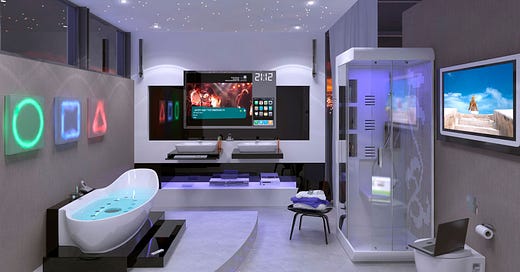




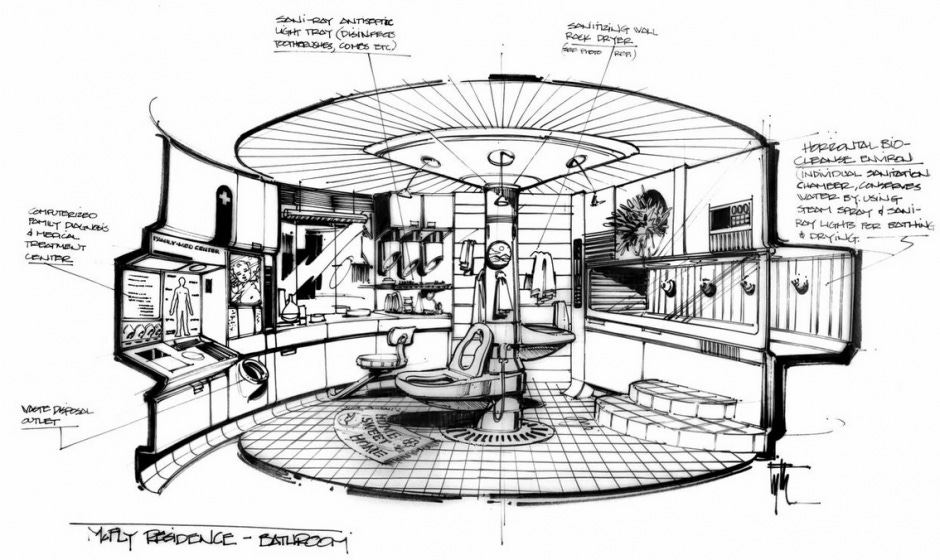

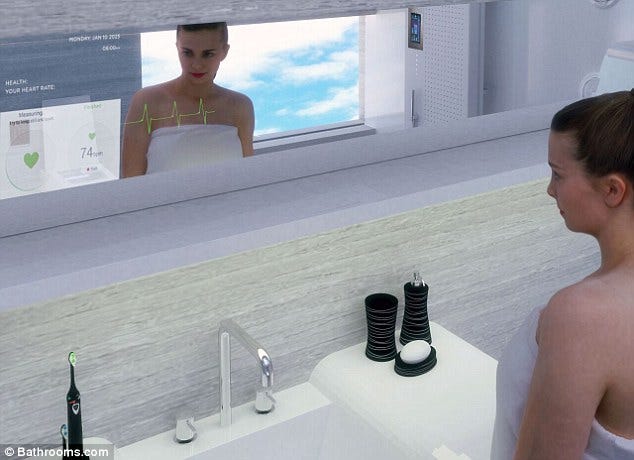

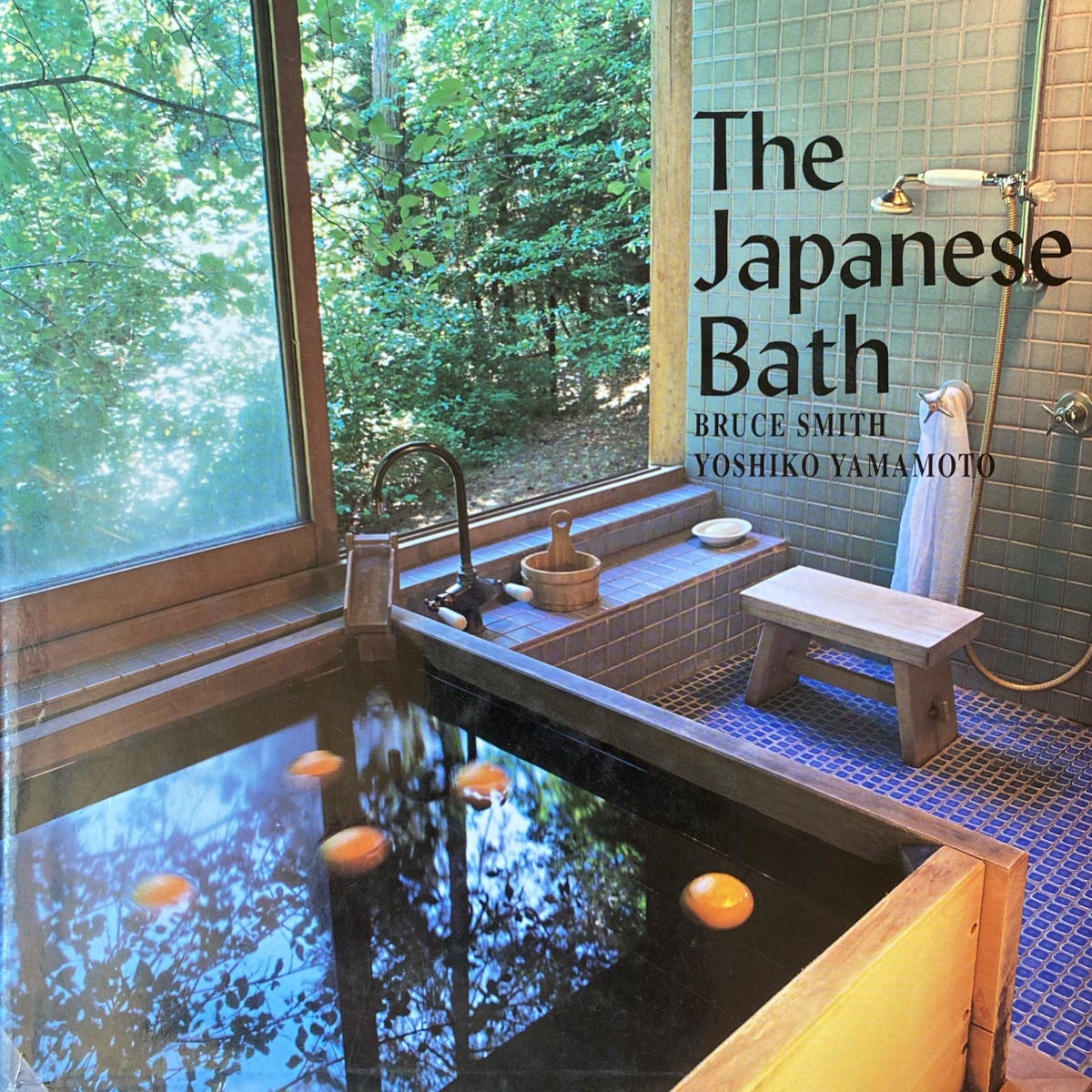
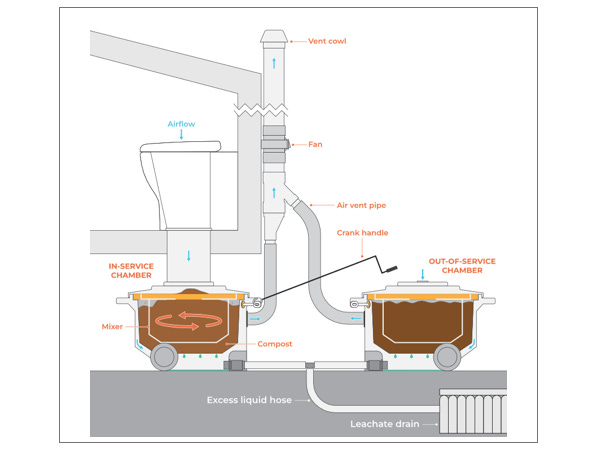


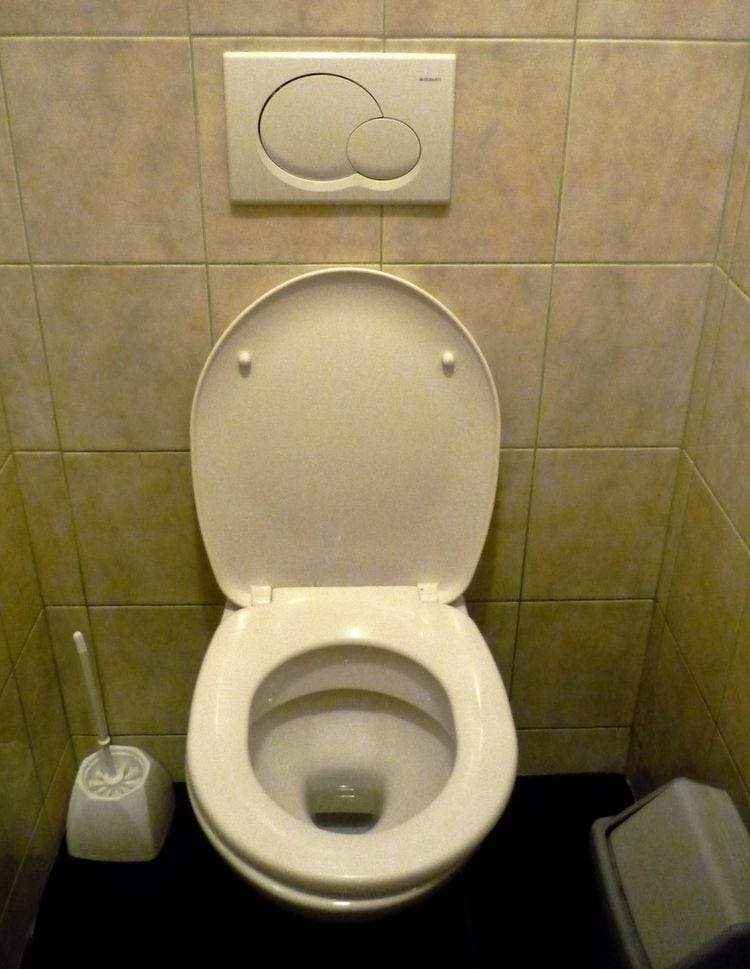
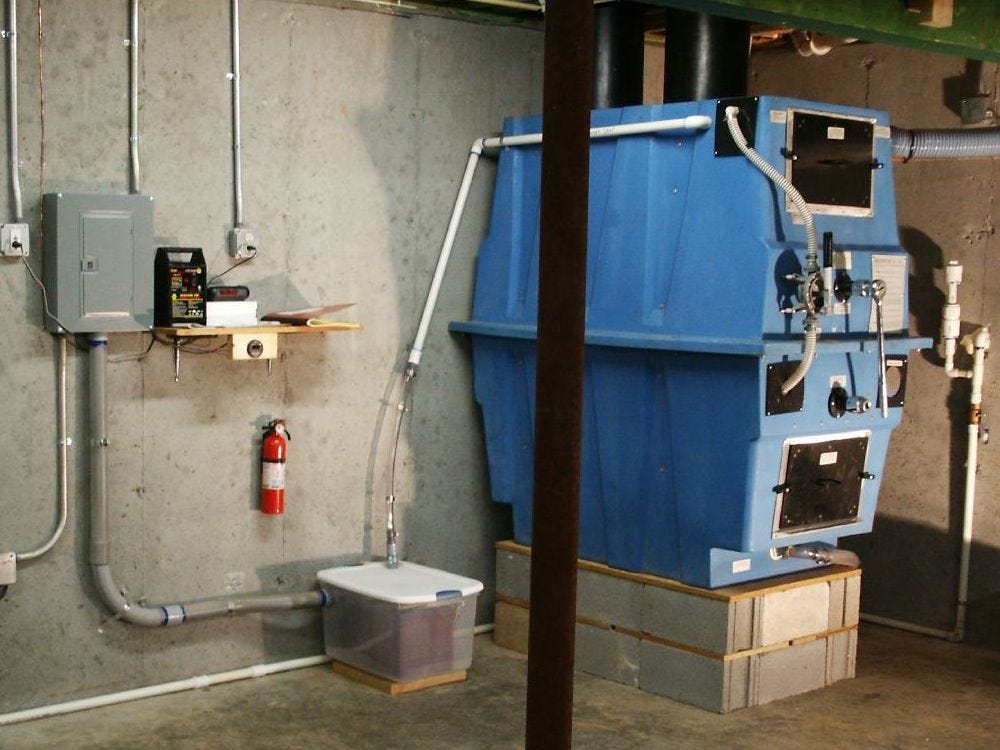

I wonder about having a toilet with an exhaust fan in a tightly sealed house. Would make-up air need to be provided? Does your house smell like poop when the power goes out?
Bathroom of the future? Mine would be a large walk-in tub (due to injuries), a shower stall large enough to fit a wheel chair (or at least transfer from wheel chair to stool and back), a wall mounted toilet so that I could have a higher and more comfortable seat and not only an ERV fan, but also an auxiliary heater keep the bathroom warm for the baths or extended showers. It would also be nice to have space for a wheelchair plus.
As for the infrastructure, I think a grey water holding tank and blackwater septic tank are mandatory and should be coded into new homes.
But I guess my future vision is more closer-termed than others.